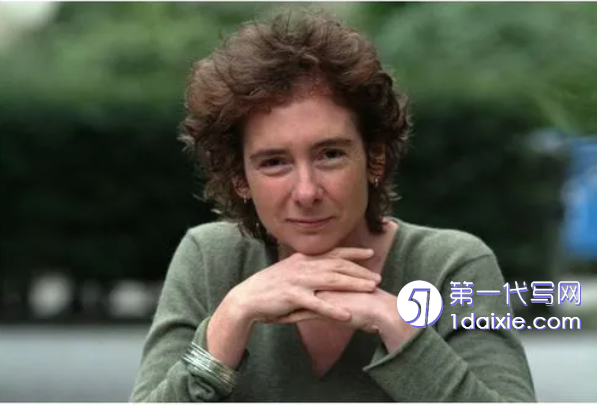本文是一篇英语论文,笔者认为温特森的小说对性别问题表现出敏锐的关注,小说穿插了她对于哲学的思考,尤其对于存在、爱、时间和空间等哲学问题有着深刻的阐述。对于传统的挑战和颠覆贯穿于温特森的叙述方式和人物塑造,这也是她小说最突出的特点。
Chapter One Becoming in the Religious Space
1.1 Home as a religious territory

In Oranges Are Not the Only Fruit, the home has been enveloped in the religious fervour of the heroine’s adoptive mother, who has turned the family into a preaching place. The house has lost its original connotation, and underneath the mother’s religious fantasies, it is full of an extraordinary “unquestionability”. The home is the product and embodiment of the mother’s will. The adoptive mother places everything in the house, including the orphan and the husband, under her authority, becoming the shaper and dictator of the space. “A kingdom of power is formed under the private sphere” (Chizuko 68), and the mother’s power constructs this domestic space. The power of the mother depends on the irresistible divine power of the Church, which spreads the supreme religious divine power in the home, and the space of the home becomes a religious territory.
The decorations in the house reflect the almost rabid religious fervour of her adoptive mother, and most of the religiously themed decorations come from the gifts given to her by Reverend Spratt, who persuaded her to convert. In a drawer especially emptied for the purpose is a sumptuous tablecloth inscribed with “DEEDS OF THE OLD TESTAMENT” and containing “a special drawer with nothing else but a piece of Tiffany glass and some parchment from Lebanon” (Winterson, Oranges, ch.1). The fact that the tablecloth with the religious motto and the precious crystal ornaments are kept in a separate internal drawer also shows the importance that the foster mother attaches to her religious beliefs. As an enclosed interior space, the drawer represents the inner world of the adoptive mother (Bachelard 85), whose heart was filled with religious beliefs, leaving no room for her adopted daughter or her husband. At the head of the mother’s bed, a very private and personal space lay a photograph of a priest who has travelled to Africa to preach in the heat. The same priest who initiated the mother into religion has travelled to remote countries to try to convert the heathen and in this photo, he is surrounded by a group of black men carrying spears.
1.2 Sexuality as the key to deterritorialization
The territory of the home has shaped the heroine and she continues to grow up according to her mother’s will, but in the process of becoming, she eventually breaks down the walls of her home and deterritorializes the space of her home. The point of deterritorialization is the conflict between the heroine’s own homosexuality and the strict rules of her mother’s religion regarding sexual orientation. The walls of the territory crack and deterritorialization finally comes to the surface. The clash of sexual orientations becomes the key to the complete overthrow of this territory, as the territory throws the heroine out of the house because of her mother’s religious ideals.
The heroine discovers her homosexual orientation in generation, not initially realising that the outpouring of her natural feelings will have some painful consequences. She doesn’t even have a concept of sexual orientation. The heroine meets a girl called Melanie and becomes unconsciously attracted to her as she spends time with her, eventually revealing her feelings for Melanie to her foster mother:
I explained how much I wanted to be with Melanie, that I could talk to her, that I needed that kind of friend. And . . . . And . . . . But I never managed to talk about and . . . . My mother had been very quiet, nodding her head from time to time, so that I thought she understood some of it. (Winterson, Oranges, ch.7)
Chapter Two Becoming in the Gendered Space
2.1 Home without father
The home in Sexing the Cherry is the fluid home of orphan, where the constant deterritorialization accompanies the orphan’s deterritorialized and nomadic life. The mother, Dog-Woman, is an orphan, and she picked up a child wrapped in a sack by chance from the river. The occasional encounter rather than the accurate blood relationship initially gives the home a fluidity that is a deterritorialization of the traditional blood family in the real world. Dog-woman becomes a mother, not by giving birth. Instead, the child, like Moses from the Bible, who floats down the river, is saved and raised by the female on the riverbank. Dog-Woman never expected to meet this orphan because she could not be loved by others due to her unbelievable weight. Therefore, she could not marry and have children like most people, and having this child becomes the thing she cherishes forever.
From taking care of this orphaned child, she really feels she has a family because before, she was always alone and unacceptable on the edge of society with only her dogs for company, and it is only after taking care of this orphan that she feels comforted and accompanied. This occasional encounter creates a family of orphans that reflects the deterritorialization of the traditional blood family. From the beginning to the end of the novel, Jordan, the child sent by the river, does not try to find his birth parents or where he comes from but is always on his way to search for himself. The absence of his parents created a lack of identity, and the Dog-Woman’s care only disconnected him from the previous generation, leaving him to focus on the present, on himself, and to look outside to find himself. The non-blood family does not give Jordan an identity or, in another sense, a bond. As Eva König says, “within the cultural configurations of family (the primary site of orphan fictions), an orphan, without roots and family history, represents a radical break with the notion of family” (5).
2.2 Gendered territory
The first part has shown that the fluid home of orphans deterritorializes ordinary families by descent, and this fluid home is created from the fundamental concern of another person. The following parts discuss the territory of hierarchical patriarchy, the royal garden, and the typical territories with female imprints, the brothel, the convent, and the household.
2.2.1 Royal garden as the centre of hierarchical patriarchy
Tradescant invited Jordan to create a new garden for the King and Queen and to make it even more unique, so he took Jordan out to sea in search of exotic plants. It was only after his father’s death that he had to end his voyage and return to England to continue working as the King’s gardener. They set off overseas, searching for unseen varieties to add an exotic atmosphere to the garden.
The Royal Garden is a space created and controlled by the British hierarchy of the time. This space is stratified, with each gardener moving from point to point, living according to rigid lines, and this garden has a fixed axis, the monarch. Every plant and tree in this garden are designed to please the king and queen, and the monarch’s rewards and praise for the gardener become “glory” in everyone’s eyes, an honour that fixes the gardener’s position even further to the point, and the garden becomes a more bounded territory. The gardeners are always busy planting in this space, but they only enclose themselves into this royal garden, even when they are out sailing, to bring more plants into the garden and further strengthen the territory. The royal garden is a part of this hierarchical tree and consolidates this tree’s structure.
Chapter Three Never-ending Becoming in the Social Space ................... 61
3.1 Exile to the home at edge ................................................................. 61
3.2 The lighthouse as an ideal symbol of stability ................................. 63
3.3 Storytelling as a way of Becoming .................... 65
Conclusion ................................ 69
Chapter Three Never-ending Becoming in the Social Space
3.1 Exile to the home at edge
The home in Oranges Are Not the Only Fruit is surrounded by a religious fence, the home in Sexing the Cherry is an ideal orphan home, and the home in Lighthousekeeping is a marginalised space.
The illegitimacy of the orphan predisposes the space of the home to instability, which deepens the orphans’ insecurity about themselves. In Lighthousekeeping, Silver’s birth is the result of a one-night stand between her mother and a passing sailor, leaving her an unwed single mother the consequence that she was “sent up the hill, away from the town, with the curious result that she looked down on it” (Winterson, Lighthousekeeping, ch.1). This is how Silver describes the home she was born into:
I lived in a house cut steeply into the bank. The chairs had to be nailed to the floor, and we were never allowed to eat spaghetti. . . .
Some people are raised on a hill, others in the valley. Most of us are brought up on the flat. I came at life from an angle, and that’s how I’ve lived ever since. (Winterson, Lighthousekeeping, ch.1)

Conclusion
Winterson’s three novels about orphans describe the generation of orphans between different spaces. The first orphan, Jeanette, breaks out of the religious territory constructed by her adoptive mother and the church, and her own self is then opened up to a myriad of possibilities, no longer subject to the authority of religion but following the threads of unravelling deterritorialization and generation in different spaces. The protagonist of the second novel, Jordan, and his adoptive mother, Dog-Woman, both orphans, form an itinerant family of orphans. Jordan’s nomadic life is a journey of gender dissolution. The territories he traverses are gendered spaces, such as the royal gardens representing patriarchy and the patriarchal spaces binding women. Only when he comes to the dance school and witnesses Fortunata’s conquest of her body in the form of dance does he see the possibility of transcending gender through art and continues his nomadic life along the line of becoming a woman. In Lighthousekeeping, the home of the orphan and her unmarried mother tilts high off the ground, leading to the mother’s accidental death. Silver goes on a journey of wandering, acting mad, constantly on the edge of social space, eventually reaching a self-connection between herself and social space through storytelling, connecting her story to other stories that are continually deterritorializing. As these stories continue to deterritorialize each other’s territories, Silver continues to generate, filling the gaps of her rootlessness with her stories. The three novels are also interconnected textual spaces, constantly inter-domaining with those who read them and thus deterritorializing the world.
reference(omitted)
